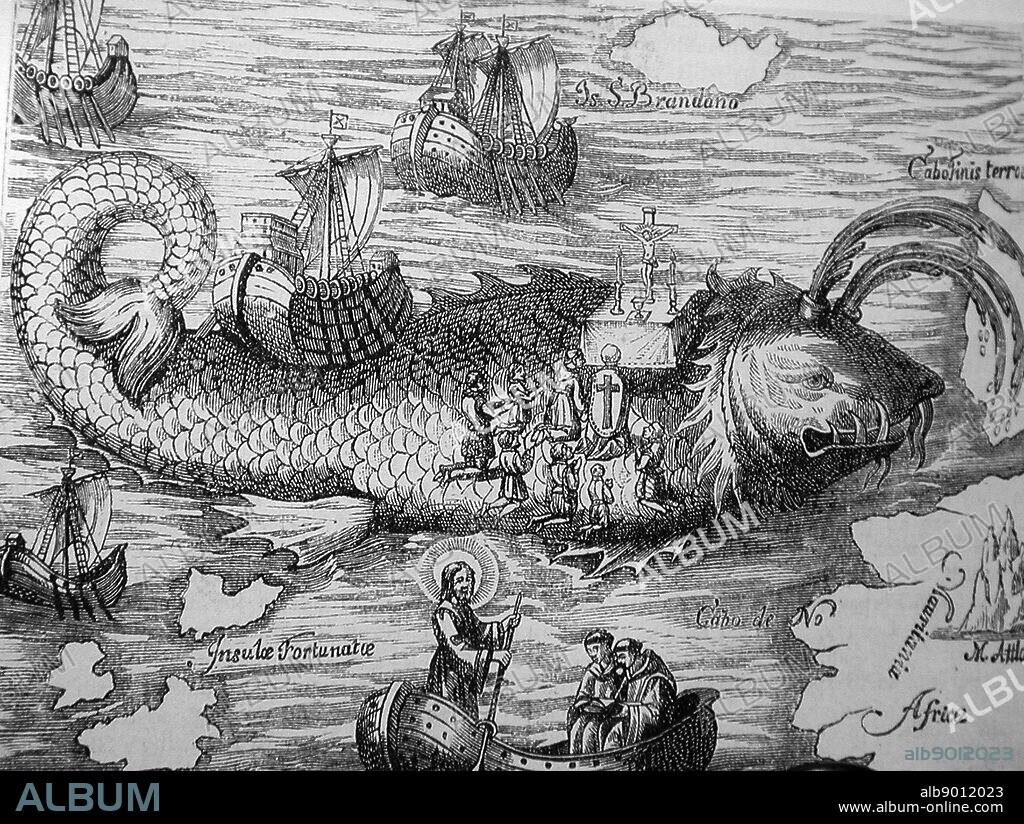alb9012023
St Brendan and the whale from a 16th century engraving Saint Brendan of Clonfert or Bréanainn of Clonfert (c. 484 c. 577) Situated somewhere west of Europe, St. Brendans Isle is a phantom island often regarded as myth, since, unless it is the so-called 'Eighth Canary Island' known since time immemorial to the Spanish and Portuguese authorities as San Borondón, only a few have claimed to have seen it. In the Irish tradition, the island is named after the Saint Brendan who founded the Clonfert monastery and monastic school. It was apparently discovered by the saint and his followers while they were traveling across the ocean, evangelizing to islands. It appeared on numerous maps in Christopher Columbus time, apparently acting as one of the things spurring him on to explore the ocean westwards. It also sparked some controversy, because the claim is that St. Brendan and his brethren arrived at the Americas first, around the 6th century (530 AD). The first mention of the island was in the ninth century Latin text Navigatio Santi Brendani Abatis (Voyage of Saint Brendan the Abbot), placing the island into Irish and European folklore.

|
Add to another lightbox |
|
Add to another lightbox |



Buy this image.
Select the use:

Caption:
St Brendan and the whale from a 16th century engraving Saint Brendan of Clonfert or Bréanainn of Clonfert (c. 484 c. 577) Situated somewhere west of Europe, St. Brendans Isle is a phantom island often regarded as myth, since, unless it is the so-called 'Eighth Canary Island' known since time immemorial to the Spanish and Portuguese authorities as San Borondón, only a few have claimed to have seen it. In the Irish tradition, the island is named after the Saint Brendan who founded the Clonfert monastery and monastic school. It was apparently discovered by the saint and his followers while they were traveling across the ocean, evangelizing to islands. It appeared on numerous maps in Christopher Columbus time, apparently acting as one of the things spurring him on to explore the ocean westwards. It also sparked some controversy, because the claim is that St. Brendan and his brethren arrived at the Americas first, around the 6th century (530 AD). The first mention of the island was in the ninth century Latin text Navigatio Santi Brendani Abatis (Voyage of Saint Brendan the Abbot), placing the island into Irish and European folklore.
Credit:
Album / World History Archive
Releases:
Model: No - Property: No
Rights questions?
Rights questions?
Image size:
6000 x 4518 px | 77.6 MB
Print size:
50.8 x 38.3 cm | 20.0 x 15.1 in (300 dpi)
Keywords:
 Pinterest
Pinterest Twitter
Twitter Facebook
Facebook Copy link
Copy link Email
Email
